Papers by Nasser Abu-Zeid

Lo studio integrato, svolto quale supporto tecnico al redigendo studio di fattibilit\ue0 ex art.1... more Lo studio integrato, svolto quale supporto tecnico al redigendo studio di fattibilit\ue0 ex art.14, comma 2, del D.P.R. n. 207/2010, da porre a base di gara ai sensi dell\u2019art. 153 del D.L.vo 163/2006, per il Project Financing per la riqualificazione urbana del Centro Storico di Apice Vecchia, \ue8 suddiviso in due unit\ue0 di lavoro. L\u2019UNIT\uc0 1 \ue8 a cura del Centro Ricerche Architettura>Energia del Dipartimento di Architettura dell\u2019Universit\ue0 degli Studi di Ferrara e ha raggiunto i seguenti risultati: - la valutazione preliminare dello stato di fatto tecnologico ed energetico del complesso di edifici del borgo, funzionale alla definizione delle prestazioni attuali dell\u2019insieme di fabbricati e finalizzata all\u2019individuazione di problematiche e potenzialit\ue0 del processo di riqualificazione; - l\u2019analisi preliminare sulle potenzialit\ue0 di sfruttamento delle fonti energetiche rinnovabili all\u2019interno del territorio di Apice Vecchia, in relazione ai fattori ambientali e tecnologici del territorio; - la definizione di scenari di intervento riguardanti la riqualificazione energetica e ambientale del borgo storico di Apice Vecchia, al fine del raggiungimento degli obiettivi di innalzamento prestazionale attraverso strategie pertinenti allo stato di fatto costruttivo, al contesto di riferimento e alle funzioni previste dallo studio di fattibilit\ue0; - la definizione di scenari di integrazione delle fonti energetiche rinnovabili al fine di raggiungere gli obiettivi di produzione di energia attraverso strategie pertinenti alla valorizzazione delle risorse presenti sul territorio, alla verifica della compatibilit\ue0 architettonica e paesaggistica e all\u2019utilit\ue0 per le funzioni previste dallo studio di fattibilit\ue0. L\u2019UNIT\uc0 2 \ue8 a cura del Dipartimento di Scienze della Terra dell\u2019Universit\ue0 degli Studi di Ferrara e ha raggiunto i seguenti risultati: - indagini preliminari relative al sito ed ai suoi immediati dintorni mediante analisi degli aspetti geologici, litologici, stratigrafici, strutturali, morfologici e sismotettonici come desunti da osservazioni dirette di terreno e dalla letteratura disponibile; - indagini geofisiche lungo transetti e siti selezionati all'interno del borgo storico basate su tomografie di resistivit\ue0 elettrica, profili mediante ground penetrating radar e analisi sismiche con la tecnica dei microtremori
Supplemental material, 3th_response_to_the_Reviewer for Structural health monitoring of the Ferra... more Supplemental material, 3th_response_to_the_Reviewer for Structural health monitoring of the Ferrara University before and after the 2012 Emilia (Italy) earthquake, and after the damage repairs by Maria Rosaria Gallipoli, Tony Alfredo Stabile, Giulia Massolino, Marco Mucciarelli, Nasser Abu Zeid, Leonardo Chiauzzi, Samuel Bignardi and Alessandro Rebez in Structural Health Monitoring
Handbook of Cultural Heritage Analysis, 2022
64th EAGE Conference & Exhibition, 2002

La Grotta di Fumane si trova sul versante di una piccola valle poco sopra la località Ca’ Gottolo... more La Grotta di Fumane si trova sul versante di una piccola valle poco sopra la località Ca’ Gottolo. Fu scoperta da Giovanni Solinas, e dal 1988 vengono eff ettuati scavi sistematici che hanno permesso di individuare una lunga serie di livelli stratigrafi ci, per un’altezza di quasi 12 metri. In questo articolo viene presentato un rilievo geometrico 3D eff ettuato con scansione laser e fotogrammetria dell’intera Grotta di Fumane. Tale rilievo, fi nalizzato alla costruzione di un modello digitale tridimensionale della Grotta, si inserisce in un contesto di rilievo integrato, tra geomatica, geofi sica ed archeologia.The Fumane Cave is located in a small valley just above Ca’ Gottolo. It was discovered by Giovanni Solinas, and from 1988 are made systematic excavations which have identifi ed a series of stratigraphic levels, to a height of almost 12 meters. Th is article presents a 3D geometric survey of entire Cave carried out with laser scanning and photogrammetry. Th e survey, aimed at building a three-dimensional digital model of the Cave, is set in a context of integrated survey, including geomatics, geophysics and archeology

In seguito alla scoperta di un nuovo sito paleolitico tramite l’effettuazione di un saggio strati... more In seguito alla scoperta di un nuovo sito paleolitico tramite l’effettuazione di un saggio stratigrafi co nel corso del 2017, sono riprese le ricerche archeologiche sul campo nell’Altopiano del Cansiglio. Il sito, identifi cato all’interno di una cavità nota come Landro, ha restituito un’importate sequenza stratigrafi ca che testimonia l’occupazione umana della zona durante la fase fi nale del Paleolitico, dopo l’Ultimo Massimo Glaciale. Il ricco record archeologico, che comprende oltre ai manufatti in pietra scheggiata anche elementi organici tra cui resti ossei degli animali cacciati, permetterà di ottenere importanti informazioni sui modi di vita di questi gruppi di cacciatori-raccoglitori.Following the discovery, in 2017, of a new Palaeolithic site thanks to the digging of a stratigraphic trench-pit, fi eld archaeological investigations undertaken in the Cansiglio plateau were restarted. The site, located inside a small cave called Landro, yielded a thick stratigraphic sequence ...
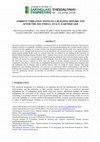
Structural monitoring of strategic buildings is an important tool for the identification of dynam... more Structural monitoring of strategic buildings is an important tool for the identification of dynamic characteristics changes caused by an earthquake, of primary interest to prevent potential damage due to future seismic events or even to assess the capability of a seismic retrofit to the damaged structure. Recent studies have shown how these variations can be assessed with special focus on the permanent and transient decrease of the main frequency during ground shaking. In this work, we analyzed three data set acquired on one building of the University of Ferrara (Emilia Romagna Region, Northern Italy). Ambient noise surveys were performed at each floor of the building: the first data set was acquired few months before the earthquake that struck the Emilia region on May 20, 2012; the second was acquired right after the earthquake, when the building showed slight damage; finally, the third data set was acquired in 2016, after the repair of seismic damage occurred to non-structural com...

La storia del sito archeologico di Pilastri è stata ampiamente descritta nelle pagine di questa r... more La storia del sito archeologico di Pilastri è stata ampiamente descritta nelle pagine di questa rivista (Nizzo 2014, Nizzo et al. 2015 ) e la sua indubbia importanza e peculiarità hanno coinvolto molti esperti e autorità locali. La convenzione triennale stipulata tra Soprintendenza per i Beni Archeologici dell’Emilia Romagna, Comune di Bondeno, Associazioni locali (Gruppi Archeologici di Bondeno e Ferrara) ed un team di archeologi e scienziati delle università di Padova e Ferrara (coordinati sul campo da Valentino Nizzo e dalla ditta P.ET.R.A), ha permesso di indagare a fondo non solo la storia e l’evoluzione dell’insediamento, ma principalmente la ricostruzione delle modalità di vita degli abitanti per definirne l’alimentazione e sussistenza. Il grande entusiasmo suscitato da questa ricerca, condiviso anche sui più famosi social network, ha permesso al sito di Pilastri di incrementare interesse e curiosità, tempestivamente concretizzati con studi più tecnici ed approfonditi. Esistono numerose discipline scientifiche di rilevante supporto all’archeologia; esse permettono infatti un incremento di informazioni dirette ed indirette da integrare alla ricerca sul campo e permettere una pianificazione sulle aree di intervento. Tra queste metodologie indirette la Geofisica si pone tra le maggiormente utilizzate, in quanto essa permette una ricognizione non invasiva del sottosuolo mediante la misura, in superficie, della variazione di una o più proprietà fisiche sensibili. Da queste variazioni spaziali, dette anomalie, è possibile ricostruire la natura, le dimensioni e la profondità degli “oggetti” sepolti. Lo studio che verrà descritto in queste pagine è stato eseguito dal gruppo di Geofisica Applicata dell’Università di Ferrara in accordo con la Soprintendenza per i Beni Archeologici dell’Emilia Romagna, e ha come scopo quello di indagare, mediante una tecnica geofisica innovativa per l’Archeologia, un’area adiacente l’insediamento terramaricolo vero e proprio, al fine di determinarne i possibili paleosuoli antropici. L’importanza e peculiarità di questo studio è ulteriormente provata dalle specifiche verifiche, eseguite durante la campagna di scavi conclusasi ad ottobre 2015, che ha permesso una verifica diretta dei risultati ottenuti

Near Surface Geoscience 2015 - 21st European Meeting of Environmental and Engineering Geophysics, 2015
The characterization of soil settlements below foundations of buildings using surface waves metho... more The characterization of soil settlements below foundations of buildings using surface waves methods represent an extreme challenging problem because of the presence of localized shear waves variation and shallow heterogeneity. To tackle the near-foundation shear waves distribution reconstruction challenge a method for the elaboration of surface waves recordings unbound from both rigid field geometry and from the classic layered subsurface assumption would be highly desirable. We introduce a novel elaboration strategy of surface waves data, based on the Direct Interpretation of Phase Lags (DIPL-3D)among pairs of seismic signals which aims to retrieve the three dimensional shear waves velocity subsurface distribution without using inversion. As an example application, the method is used for the evaluation of near foundation soil stiffening after an expanding resins injection intervention

The use of Love-waves has been limited to seismological studies related to crustal and mantle cha... more The use of Love-waves has been limited to seismological studies related to crustal and mantle characterisation being more sensitive to shear waves variations and independent on the Poisson’s ratio. However, their use in shallow subsurface characterisation is not widely employed, although in the last five years a number of papers has addressed this issue (e.g. Safani et al., 2005, Eslick et al., 2008, Donghong, 2007). In the present paper we present and discuss the results of a microtremor survey conducted in a number of sites located in the alluvial deposits of the Po Plain, Province of Ferrara, North Italy. Microtremor registrations of Rayleigh and Love waves were collected at each site using 3D 4.5 Hz geophones spaced eight meters. Rayleigh and Love dispersion curves were obtained using the p- transform, implemented in the SeisOpt(R) Re.MiTM software (Optim 2007), followed by an FFT (Louie, 2001). The 1D inversion of the dispersion curves evidenced, in a number of sites, the pres...
Introduzione. L'Istituto Nazionale di Oceanografia e di Geofisica Sperimentale–OGS di Triest... more Introduzione. L'Istituto Nazionale di Oceanografia e di Geofisica Sperimentale–OGS di Trieste e l'Università degli Studi di Ferrara-Dipartimento di Scienze della Terra, in collaborazione con Edilgeo e Eurekos srl, sotto la supervisione della Regione Emilia Romagna e della Protezione Civile Nazionale (PCN), hanno realizzate una serie d'indagini Ground Penetrating Radar (GPR) e sismica a riflessione ad alta risoluzione con l'obiettivo di indagare la parte più superficiale del terreno tra gli edifici lesionati nei comuni di Mirabello ...
Supplemental material, damage_assessment_Corpo_B_English for Structural health monitoring of the ... more Supplemental material, damage_assessment_Corpo_B_English for Structural health monitoring of the Ferrara University before and after the 2012 Emilia (Italy) earthquake, and after the damage repairs by Maria Rosaria Gallipoli, Tony Alfredo Stabile, Giulia Massolino, Marco Mucciarelli, Nasser Abu Zeid, Leonardo Chiauzzi, Samuel Bignardi and Alessandro Rebez in Structural Health Monitoring

Journal of Archaeological Science: Reports, 2019
Backgound: Primary hyperhidrosis is a condition of unknown etiology characterized by excessive sw... more Backgound: Primary hyperhidrosis is a condition of unknown etiology characterized by excessive sweating, typically on the palms of the hands, on the soles of the feet, and in the arms. The sweating response is increased by emotional stimuli, temperature, or elevated anxiety level or even spontaneously with no apparent cause. Objictive: The aim of the study is to evaluate the safety, efficacy and early and late complications of bilateral simultaneous endoscopic thoracic sympathectomy in treatment of primary hyperhidrosis. Patients and methods: Thirty patients with palmar hyperhidrosis grade 3 and 4 HDSS amenable for thoracoscopic sympathectomy were primarily managed. The study compromise 12 males and 18 females; the mean age at intervention was 20 (range 12-30) years. All were evaluated preoperatively with detailed history, full physical examination and the required investigations to confirm the diagnosis and to assess the fitness for surgery. Consent was then taken after discussing everything with the parents. Results: Immediately after sympathectomy, all patients were completely free from palm sweating (100%), in relation to the side operated upon. Three patients out of the 27 patients (11%) with associated plantar hyperhidrosis showed improvement of their plantar sweating immediately after endoscopic trans-thoracic sympathectomy (ETS), but the sweating recurred during the follow up period. Conclusion: in view of the low morbidity and zero mortality rate of this surgical technique, we recommend it as a method of treatment for palmar hyperhidrosis. Thoracic sympathectomy eliminates palmar hyperhidrosis with minimal recurrence.
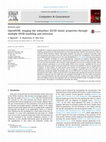
Computers & Geosciences
OpenHVSR is a computer program developed in the Matlab environment, designed for the simultaneous... more OpenHVSR is a computer program developed in the Matlab environment, designed for the simultaneous modeling and inversion of large Horizontal-to-Vertical Spectral Ratio (HVSR or H/V) datasets in order to construct 2D/3D subsurface models (topography included). The program is designed to provide a high level of interactive experience to the user and still to be of intuitive use. It implements several effective and established tools already present in the code ModelHVSR by Herak (2008), and many novel features such as:-confidence evaluation on lateral heterogeneity-evaluation of frequency dependent single parameter impact on the misfit function-relaxation of V p /V s bounds to allow for water table inclusion-a new cost function formulation which include a slope dependent term for fast matching of peaks, which greatly enhances convergence in case of low quality HVSR curves inversion-capability for the user of editing the subsurface model at any time during the inversion and capability to test the changes before acceptance. In what follows, we shall present many features of the program and we shall show its capabilities on both simulated and real data. We aim to supply a powerful tool to the scientific and professional community capable of handling large sets of HSVR curves, to retrieve the most from their microtremor data within a reduced amount of time and allowing the experienced scientist the necessary flexibility to integrate into the model their own geological knowledge of the sites under investigation. This is especially desirable now that microtremor testing has become routinely used. After testing the code over different datasets, both simulated and real, we finally decided to make it available in an open source format. The program is available by contacting the authors.

SEG Technical Program Expanded Abstracts 2017
In the framework of a geophysical survey at the "Pilastri Terramara" Middle Bronze Age archeologi... more In the framework of a geophysical survey at the "Pilastri Terramara" Middle Bronze Age archeological site (Northern Italy), which aimed at using cost-effective approaches to investigate a 12.000 m 2 portion of land, we verified that in this site the most commonly used GPR, magnetometry and ERT geophysical methods were hampered by specific unfavorable conditions. Since the main purpose of the survey was to obtain information on ancient walking surfaces, we speculated that compaction, caused by the trampling of human activity over centuries, increased both density and seismic velocity of these paleosurfaces. Assuming that such compacted layers still lie embedded in the shallow subsurface we successfully used the Horizontal-to-Vertical Spectral Ratio of microtremors, popular as HVSR, as a mapping tool. HVSR technique is seldom used in archaeological studies. The curve obtained by this method shows peaks and features that can be associated to the elastic impedance contrasts of a layered subsurface. Results from a previous single-station HVSR survey carried out on the whole area and consisted of 67 measurement points, allowed to obtain an indication about acoustic impedance contrasts and to spot few anomalies. The preliminary, yet promising result however, needed further acquisitions in order to achieve a better spatial sampling. We then tested microtremors acquisition using a linear array of seismic prospection geophones (4.5 Hz proper frequency) which have a worse response with respect the short period sensor used in single-station configuration. Yet the use of the array allowed for a comparable mapping of both paleo-surfaces and anomalies and data collection was performed at 24 locations simultaneously, so greatly accelerating the field work. In the following the two approaches are compared and an anomaly is highlighted which was located outside the hypothesized Bronze Age settlement area. Once excavated, such feature revealed to be a layer of roman age remains. Further, we show our best GPR section over the same anomaly. An indication was present in the GPR section but this became clear only afterward.
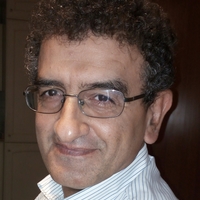

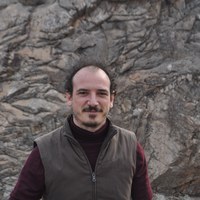
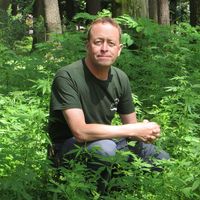


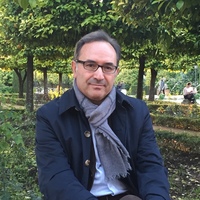


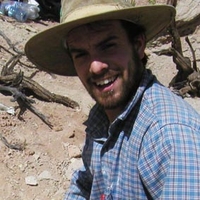

Uploads
Papers by Nasser Abu-Zeid